
Workbook: The Arsonists
ideas and images for our Canadian Stage production of the Arsonists
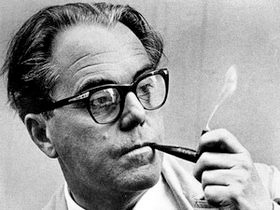
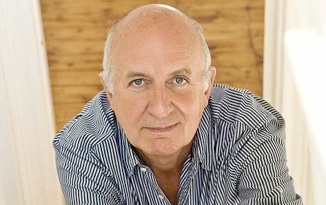
Fiona Reid plays Biedermanns wife, Babette, a hapless sidekick to the middle class business owner who lets two suspicious men into his house, thinking he can befriend them
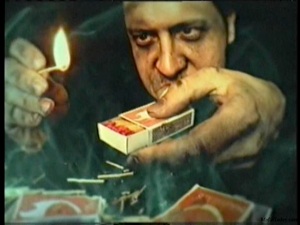

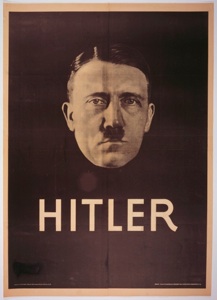
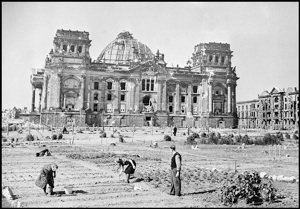

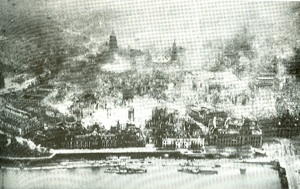
Dresden on fire. The promise of a thousand year Reich in flames. Below, the man who lit the match
Max Frisch, appropriately left. Alistair Beaton, right, has adapted Biedermann und die Brandstifter (Biedermann and the Firestarters) into a weird and wonderful English translation which premiered a The Royal Court in 2007
The great Nazi social experiment left Germany in tatters. The Reichstag, headquarters of the German government, is the backdrop, in 1946, to impromptu vegetable gardens. Left, a poster for the 1932 Nazi campaign in which the party only got thirty odd percent of the vote. Sound familiar? That the Nazi party was elected to office is testimony to the power of negative thinking and calls into question the very nature of democracy. Of course, once the party took power it dispensed with the normal rules of government. Below, right, Cologne after bombing, with its great cathedral standing in ruins in the centre. On our visit to Cologne in 1991 there was still evidence of the war, in one section of the steeple. Left, another poster from the 1932 election. Yes, election.
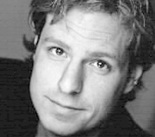
Dan Chameroy, who just worked with us at Stratford in Wanderlust joins the company at Canadian Stage to play Schmitz, the main arsonist. Who would believe such a great looking guy could set fire to a whole town? Certainly not Biedermann, our central character, played by Michael Ball, below, who we last worked with at Shaw Festival in The Doctors Dilemma, where he played Sir Patrick Cullen.
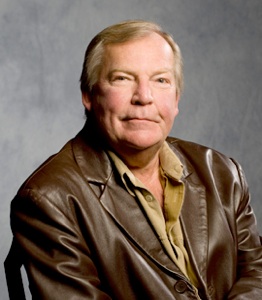
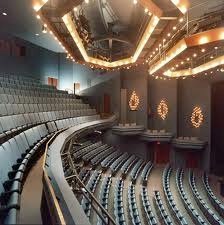

Fiona has twice worked with us at the Bluma Appel Theatre, pictured left. She starred in Sweeney Todd and again in Alan Bennetts Habeus Corpus. Below, a 1965 German production, clearly ahead of its time
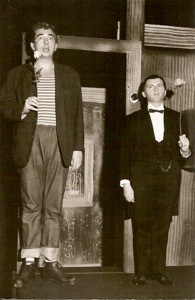
Theatre of the absurd Critic Martin Esslin coined the term theatre of the absurd in 1961 to define a form of theatre which, rejecting naturalism as the basis for its presentation of action & character, uses a variety of dramatic techniques defying rational analysis & explanation to express, by implication rather than direct statement, the absurdity of human conditions, Esslin adopts & expands the concept of the absurd employed by the existentialist Albert Camus in LE MYTHE DE SISPHE in 1942. The absurd is not so much a single , identifiable theatrical tradition as a common denominator to be found in the work of a number of 20th century dramatists. They are individually indebted to a variety of independent traditions & the circus. Some elements of the absurd may be traced back to Alfred Jerry & found in the plays by Cocteau & Ivan Goll written in the 1920s & 30s; but the term is usually associated with writers who were active after World War II, notably Samual Backett, N.F Simpsom, and Harold Pinter. In its rejection of rational & analytical
processes, the genre has some affinities with theatre of cruelty. (Source M. Esslin)


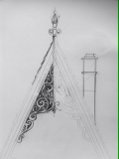
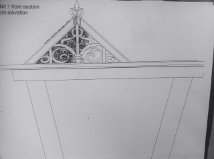
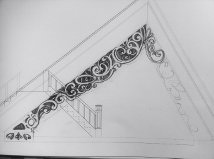

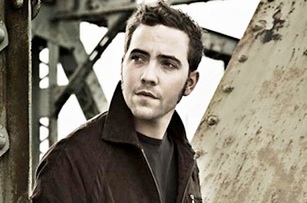
Justin Rutledge, pictured left, is doing music for the show, which will be a substantial component as we are setting some words to music. The chorus, who provide a kind of running commentary on the show, as firemen and conspirators, will be joined at times by members of the acting ensemble. Check out Justin Rutledge website for awesomeness
Real gingerbread roof, left which inspired Kens roof gable motif for the set. We thought of a landscape of roofs to symbolize what is passing, unstoppable, overhead
Rooftops signify community, a city nestled into itself, here above Whitby in Yorkshire. When one views a city from above one gains an added perspective, One sees a totality, no long lost in the maze of streets. A person sometimes craves this world view in order to get their bearings. A play can sometimes offer such perspective and help people to get their bearings, by looking at society from a distance. Its easier to see Germany in 1956 than to see ourselves, now
Charlotte Dean costume sketches, upper right, Sheila McCarthy as Anna, with slight Hazel influences (for those who are too young, Hazel was a TV maid in the 60s). We are leaning slightly into that era for our influence. The early 60s after all was a period relatively unencumbered by the ugly realities of truth. Left, Fiona Reid wears a fur collar as Babette. Below right, mod look for band. Above, Dan Chameroy costume as wrestler/arsonist. Right, we see influences that Charlotte uses from her personal research to design coat for Babette., and left the idea taken into a costume sketch which becomes a coat, here, below, fitted on Fiona in wardrobe department
More costume sketches; Upper left Babette at home. Left, Mr. Biedermann looking decidedly middle class. This idea of the bourgeois citizen is as old as the middle ages, when town burghers were licensed to practice their trade within town walls; from this grew the notion of a privileged townsfolk. Biedermann, in this case however, represents everyman
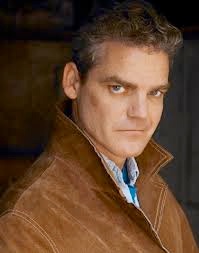

Ken first worked with Sheila McCarthy in 1977 in a Belfry Theatre production of Puttin on the Ritz, when they became instant and lifelong friends. The last time Sheila worked with us - aside from a writing project that CBC foolishly turned down - as a Canadian Stage production of Habeas Corpus. She, of course, is a star on television and film. Luckily her busy schedule allowed her to join us to play Anna, the hapless housemaid of Mr. Biedermann.
Shawn Wright, man of many faces and many many talents joins the company to play Eisenring, the waiter/arsonist sidekick of Schmitz. Shawn played numerous roles in our wordless production of Moby Dick at Stratford, including the amazing preacher. Shawn has worked for most major Canadian theatres as well as theatres on Broadway. He is a wonderful singer and a splendid comedian.





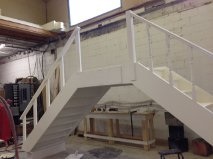


















Fiona poses for costumes fitting, above, based on sketch, right
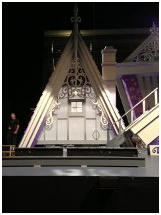


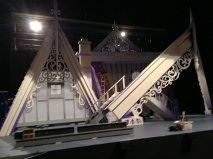
Sources of inspiration for Charlotte Dean costumes, left and right. Although costume designers take liberties with period, in order to do that they must be well acquainted with the period. For Arsonists, we decided to set the show sometime in the 50s as we were leaning towards a time in history that has often been politically idealized, as though that was a time when ideas were simpler and morals were more clear, except that none of this was true
Far left, Justin as the chorus leader/firefighter. The helmet here is a mock up of a mid century European style fire fighters helmet. Left, a photo of a real firefighter? Right, Shawn as a head waiter, serving up incendiary mayhem and chaos.

As rehearsals continue at Berkeley Street, the set takes shape at the Bluma on Front Street, left. R, Justin gets fitted up in one of his outfits, this one for the Doctor of Philosophy, and far right, Shawn in a lab coat worn by Mr. Knectling.
More progress on the set, above right a distant view of both gables that make up the Biedermann house, above, the attic gable where a lot of chemistry happens, and behind which the band hangs out. Above, right, an armchair for Biedermann, covered in plastic by his wife. Some of the finer values of the golden age of political apathy (read 50s) are on display.
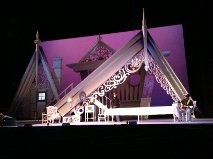
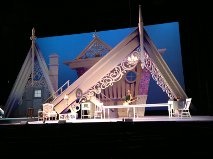
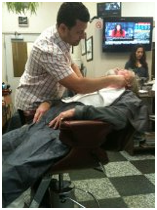
First day of tech in Bluma Appel Theatre at St. Lawrence Centre. A time for Jason Hand to paint his magic on Kens gigantic gabled set, left and right. The day goes remarkably smoothly, all things considered, slowly working our way through the show, while, below, Michael Ball gets a shave. He grew a full beard during rehearsal so that we could reshape it for the show.
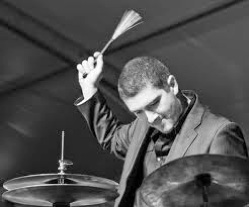
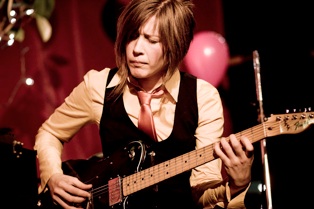
Sly Juhas and Christine Bougie make up our little onstage band, tucked behind the upstairs room on the set. Both are well established Toronto musicians who have taken time from their crazy schedules to join Justin, and us, for this production; amazing
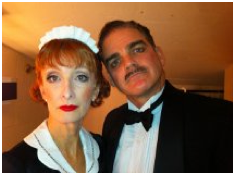
Shawn and Sheila get into make up and costumes for the tech dress of The Arsonists, down in the dungeons that are The St. Lawrence Centre dressing rooms. Below, the band begins the show, and right, Sheila and Fiona express concern over yet another strange visitor to the Biedermann house.


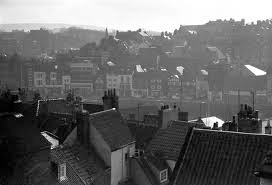
Production shots from The Arsonists at Canadian Stage on Front Street at the St. Lawrence Centre. Above, Ms Reid and Ms McCarthy, acting. Left, The Fire Brigade, Christine Bougie, Sly Juhas and Justin Rutledge, and below them Shawn Wright trying to steal matches from Michael Ball. Finally a picture of our dynamic duo posing with gasoline. Shawn Wright and Dan Chameroy enjoy a moments relaxation before they detonate their fuse wire and blow the place sky high, theatrically.
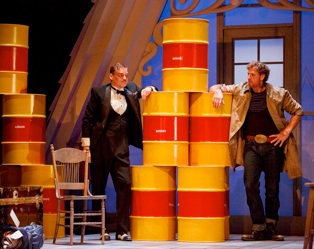

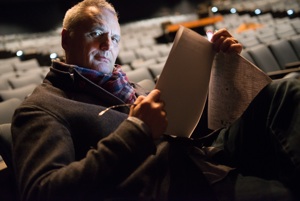


With Arsonists completed Ken and Morris take a trip to New York to workshop a new play and Justin shaves off his moustache